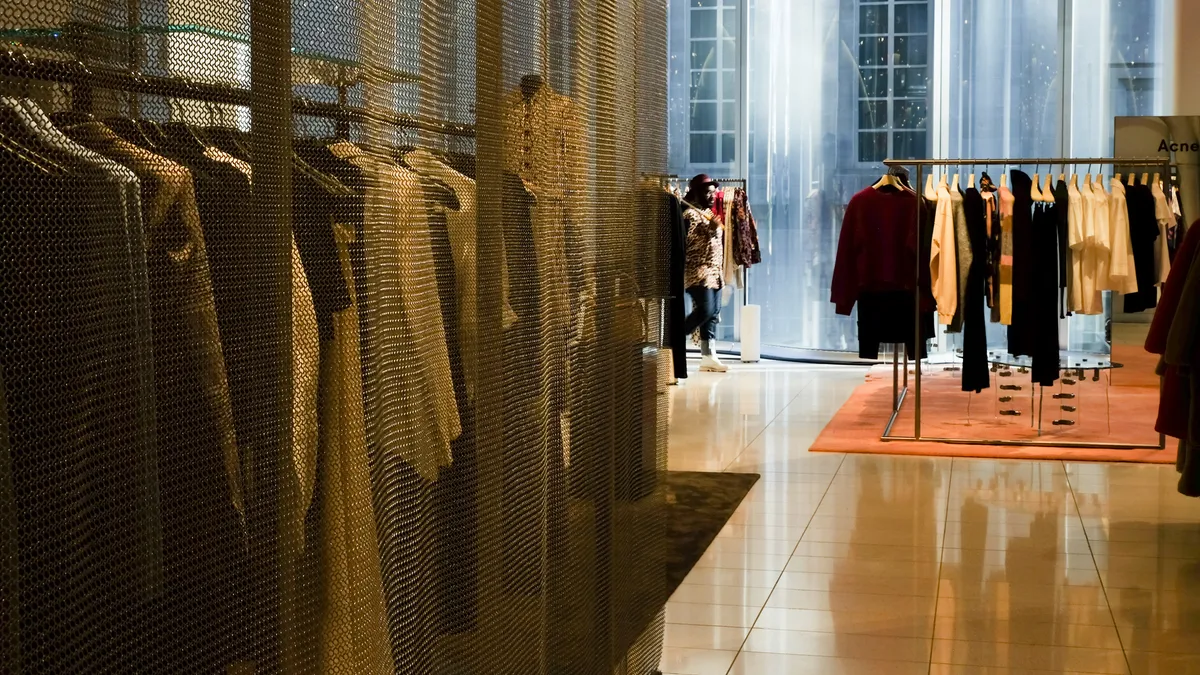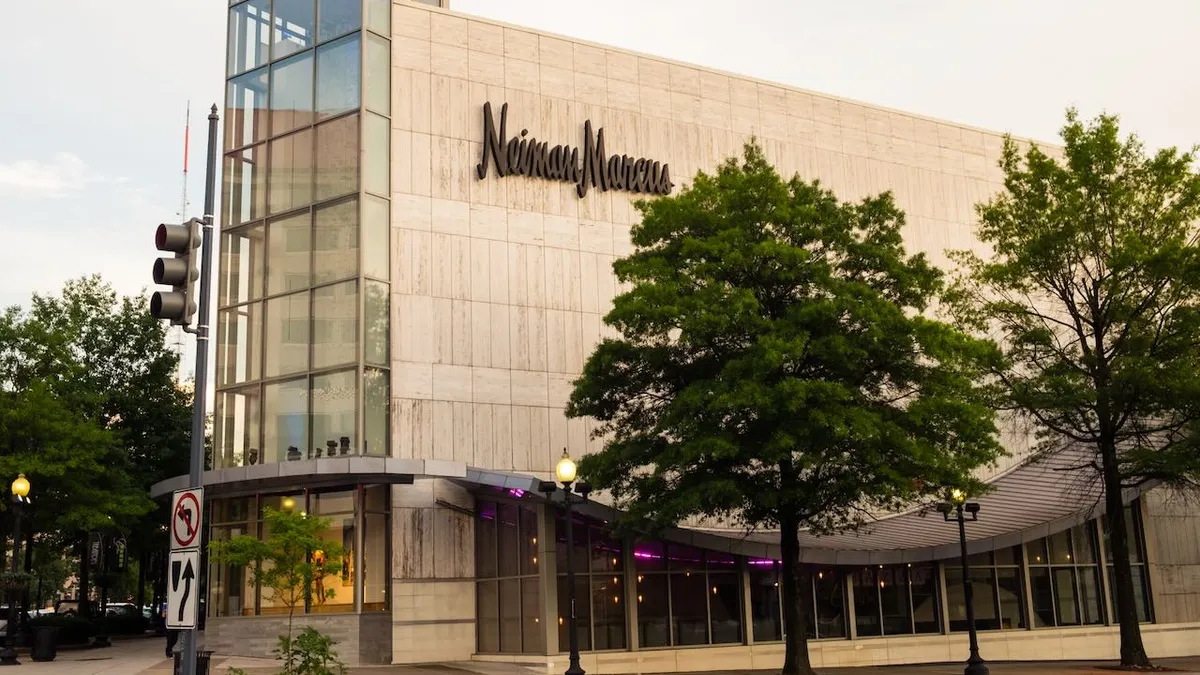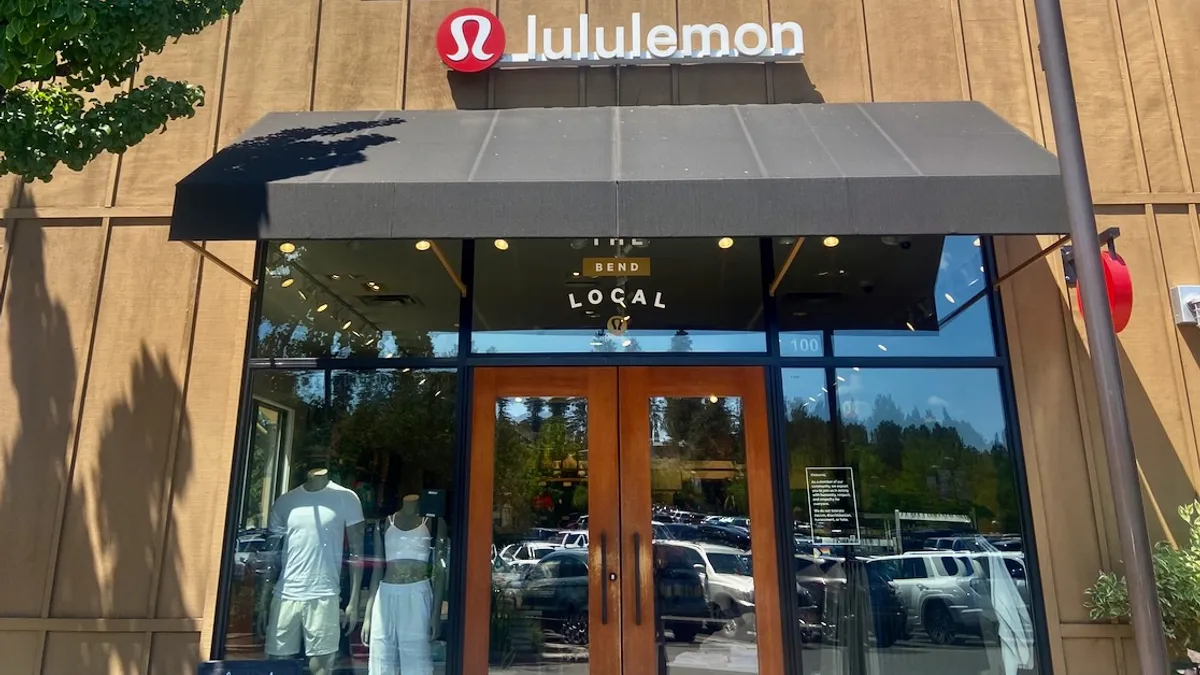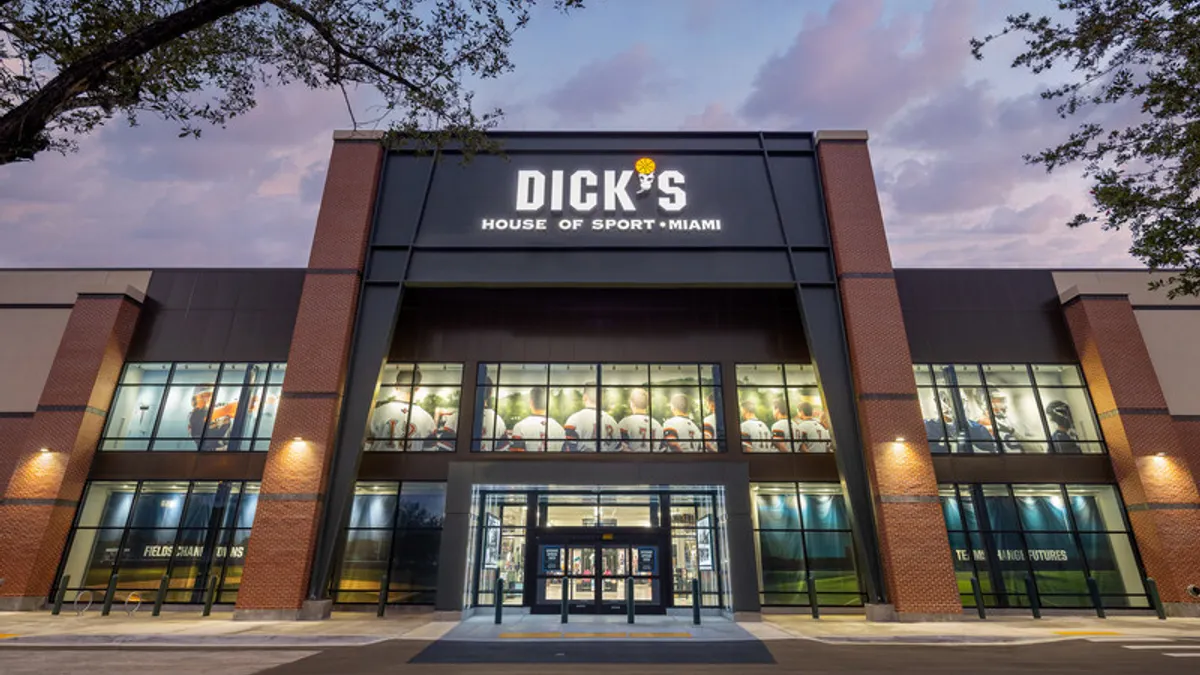Department stores were already a decade deep into their decline when the pandemic upended normal life, exacerbating years-long trends that are also hurting the traditional malls they anchor.
That has made the level of recovery this year something of a surprise. Throughout 2021 and into the holidays, traffic and sales have improved at department stores, even, as at Dillard's, compared to 2019. Profits and margins have swelled, and the declines against the sector's pre-pandemic status were milder than feared.
"The COVID pandemic forced the department store sector to innovate, invest in digital, and diversify product offerings beyond dress apparel to reach new customers," Erin Schmidt, a senior analyst at Coresight Research, said by email. "The results have paid off; as of the third quarter, revenues from the three major department stores — Macy's, Kohl's, and Nordstrom (which account for over 70% of the sector's revenue) — were down just 3.4% compared to the first three quarters of fiscal year 2019 and up 42.4% compared to 2020."
Still, the sector's challenges, evident before the pandemic, haven't disappeared. And a few new ones have also arisen.
Traffic to malls isn't recovering
The once-mutually beneficial relationship between traditional malls and their department store anchors has broken down, and the decline was worsened by the pandemic. To address that, Macy's and even Bloomingdale's are experimenting with store formats that would join Kohl's at strip-center locations.
During the Black Friday weekend, while many more people headed to stores compared to last year, foot traffic didn't reach pre-pandemic levels, according to research from Placer.ai, which found visits to be down 8.5% at indoor malls and 9.2% at outdoor malls compared to 2019. The trend is likely to continue.
"I think there is life in the A malls and we will see some interesting experiential retailing that will draw the younger crowds, and so the department stores that stay there and keep up with the times will do well," Barbara Kahn, professor of marketing at the University of Pennsylvania's Wharton School, said by email. "The B and C malls are another story — I can't see how that will work out; they will be replaced by the better positioned neighborhood centers."
Malls themselves are finding success turning away from department stores as anchors. Experiential anchors like bowling alleys or arcades are more likely to attract millennial and Gen Z shoppers, and malls anchored by experiential or healthcare centers are doing better than those with more traditional anchors, according to global data intelligence platform Near.
"The malls are reconfiguring physical space as well to cope with the 'buy online curbside pickup' experience and that requires rearranging the physical store and the parking lots," Kahn said. "The department stores need to be the leaders here, and they need to figure it out in a way that still increases pleasure in the customer experience."
Consumers are spending less
The pandemic may have taught consumers that they can live with less.
The economic squeeze experienced by the American middle class has been a blow to department stores. Despite the government support during the pandemic, which continues to help retailers, consumers may be tightening their belts. Just over half of U.S. consumers who reported spending less in the preceding three months said they have reevaluated what's "essential" spending, according to research from AlixPartners last month. That makes dollar stores, off-price retailers and mass merchants a draw.
"Target, Walmart (and Amazon) are not standing still — they are formidable competitors for the younger consumer," Wharton's Kahn said.
Channels keep shifting
The e-commerce burst seen during the worst of the pandemic last year, before vaccines were widely available in the U.S., helped keep consumers away from stores. While shoppers are returning to physical locations, mobile and online orders remain elevated, according to research from EFG-New Capital.
Sales results from Black Friday and Cyber Monday showed that retailers providing frictionless shopping across sales channels took market and wallet share; those that didn't, lost, according to EFG-New Capital Portfolio Manager Chelsea Wiater.
"Consumers are now simply too distracted and/or too savvy to execute a purchase that could be done easier or cheaper elsewhere, and for department stores this is particularly important to consider," Wiater said by email. "Part of the identity of a department store is convenience, providing a variety of goods within one store/place, but the bygone-era of one-stop physical shops hasn't always translated to the current era of digital-first shopping experience and convenience by all department stores."
The pressure to spin off e-commerce is a distraction
Along with more subdued consumer spending, a fresh challenge for department stores — and, apparently, only department stores — is the pressure from some quarters to split up their online and offline operations.
"Some quarters" is essentially investors, who see dollar signs squirreled away in the e-commerce run by these legacy retailers, many of which are at least a century old. This month, hedge fund Engine Capital slammed Kohl's for what those investors said was a disappointing stock performance and urged the retailer to mull either a split or an outright sale. After some initial resistance, Macy's is now working with AlixPartners, the firm that helped Saks Fifth Avenue with its split, in exploring new growth strategies, as Macy's CEO Jeff Gennette acknowledged how Wall Street values online pure-plays.
It all started at Saks Fifth Avenue, where the move attracted $500 million in private equity funds, and now the recently separated e-commerce company there is said to be mulling an initial public offering with a $6 billion target. The only retailers actually taking that path, like Saks, are owned by HBC: its Saks Off 5th off-price business and Canadian department store Hudson's Bay Co.
But the push will intensify next year for others to do so as well, according to Greg Sterling, vice president of market insights at location marketing platform Uberall.
"While this has a short-term pay-off, it's ultimately destructive of the customer experience," Sterling said by email. "Retailers that go this route will under-perform those that keep their traditional and digital businesses more tightly integrated."
Even some in the investment community are loath to see the point. "It's actually not really innovative," Kristin Bentz, president of KB Advisory Group, said by phone. "I get it would raise the share price if they spun it off as a different entity. But e-commerce is so intertwined right now. Makes no sense."
Their turnarounds are not enough
The new year is destined to undo some of the progress that department stores made in the holiday season, in the form of what could be a high level of returns come the new year.
Returns from online purchases alone could reach $66.7 billion, a 45.6% increase over the last five-year average, according to a report from CBRE and returns platform Optoro. That could interfere with the pricing power that department stores and other retailers have enjoyed lately, thanks to tight inventories, according to Bentz.
"I'm not really bullish on brick-and-mortar retail," Bentz said. "Dillards eventually will hit the ground. You know, trees don't grow to the sky. Everyone thinks Macy's is back — I really don't think so. I think their turnaround is helping them, but I don't think they're killing it. The shopping experience of being in the store is frightening. Try to find people to help you at Macy's — the stores are sad, the merchandise is sad and it's just a horrible experience."






















